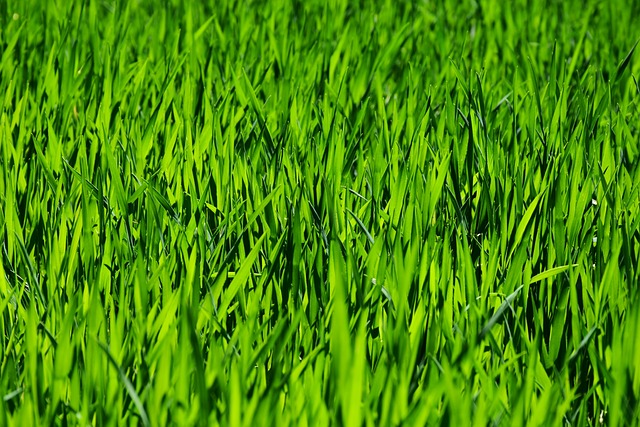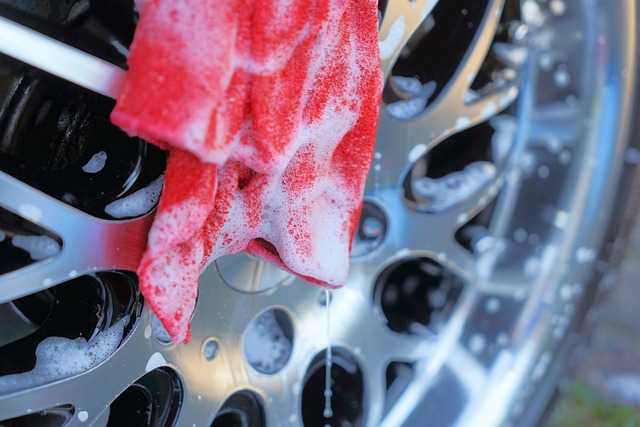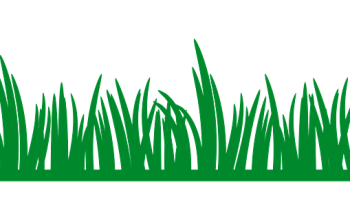Lawn care and landscaping are significantly enhanced by the practices of mulching and edging, which together promote a healthier lawn, improve soil quality, and create visually appealing boundaries. Mulching involves applying organic materials like grass clippings or leaves to the soil surface, which helps conserve moisture, regulate temperature, suppress weeds, and enrich the soil over time with decomposing nutrients. Selecting the right type of mulch, whether it's wood chips or straw, is crucial based on the type of grass, local climate, and your maintenance preferences to optimize lawn health.
Edging serves to sharply define the lawn's perimeter, preventing grass from encroaching onto paths or into garden beds, which not only maintains order but also enhances the landscape's visual appeal. Whether using manual tools like spade edges or half-moon borders for smaller areas or gas-powered equipment for larger spaces, regular edging ensures the lawn remains neat and well-defined. This practice is essential for maintaining a clear separation between different landscape elements, contributing to the overall health and curb appeal of your outdoor space. By combining mulching with edging as part of a comprehensive lawn care and landscaping routine, you can achieve a sustainable, lush lawn that is both functionally sound and aesthetically pleasing throughout the year. These practices are integral to effective lawn care and landscaping, ensuring a well-maintained and visually striking outdoor environment that stands out in your community.
Maintaining a lush, healthy lawn enhances both the beauty of your property and its environmental benefits. This article delves into the essential practices of mulching and edging within the realm of lawn care and landscaping. We’ll explore how these methods not only improve soil health and grass growth but also sharpen your lawn’s aesthetic appeal and define clear, tidy borders. From selecting the right mulch materials to mastering effective edging techniques, discover how combining these practices can elevate your lawn maintenance routine and contribute significantly to your landscaping efforts.
- Understanding the Basics of Mulching in Lawn Care and Landscaping
- The Role of Edging in Defining Lawn Borders and Enhancing Curb Appeal
- Types of Mulch Materials and Their Impact on Soil Health and Grass Growth
- Effective Edging Techniques for Various Lawn Types and Sizes
- Combining Mulching and Edging for Optimal Lawn Maintenance and Aesthetic Value
Understanding the Basics of Mulching in Lawn Care and Landscaping

Mulching is a fundamental practice in effective lawn care and landscaping that offers numerous benefits for the health and appearance of your turf. This process involves applying a protective covering, typically organic material like grass clippings, leaves, or wood chips, on top of the soil over your lawn. The primary goal of mulching is to conserve moisture, suppress weeds, improve soil quality, and maintain an even lawn surface. Organic mulches decompose over time, adding valuable nutrients back into the soil which supports grass growth and root development. Additionally, by maintaining a consistent layer of mulch, you can prevent soil compaction, which is detrimental to lawn health, and ensure better aeration for grass roots. When selecting mulch, consider materials that break down slowly to provide a long-term benefit without the need for frequent replacement. Understanding how mulching fits into your overall lawn care and landscaping strategy is key to creating a lush, healthy lawn that withstands environmental challenges and looks its best throughout the year.
Edging serves as a complementary practice to mulching in maintaining a neat and well-defined boundary between your lawn and garden beds or pathways. This process sharpens the contrast between different landscaping areas, making your yard appear more orderly and manicured. Edging helps prevent grass from encroaching on walkways and garden spaces, which can be both functional and aesthetically pleasing. It also allows for better water management in the lawn by directing water where it’s most needed. When combined with mulching, edging can enhance the overall appearance of your lawn care and landscaping efforts. The act of edging should be performed regularly to maintain clean lines and prevent overgrowth that can lead to a less polished look. By integrating both mulching and edging into your routine lawn care tasks, you’re investing in a landscape that is both visually appealing and environmentally sound.
The Role of Edging in Defining Lawn Borders and Enhancing Curb Appeal

Mulching and edging are fundamental practices in the realm of lawn care and landscaping that contribute significantly to the health and aesthetic appeal of a lawn. Edging plays an instrumental role in defining clear, sharp borders between the lawn and adjoining areas such as flowerbeds, walkways, or garden paths. This demarcation not only prevents grass from encroaching into unwanted spaces but also enhances the overall orderliness and curb appeal of a property. The clean lines that edging provides can transform a well-manicured lawn into a focal point of visual interest, making it a standout feature in any landscape. Furthermore, maintaining consistent edges with the help of manual edgers or gas-powered border edgers ensures that your lawn’s boundaries are neat and well-groomed, which is often the first impression for visitors. Incorporating edging into your regular lawn care routine can significantly elevate the curb appeal of your home, making it a point of pride and envy in the neighborhood. Lawn Care and Landscaping professionals emphasize that a properly edged lawn not only delineates different landscape elements but also accentuates the beauty of the entire outdoor space by creating a polished finish that is both functional and visually appealing.
Types of Mulch Materials and Their Impact on Soil Health and Grass Growth

Engaging in effective lawn care and landscaping practices, including the selection of appropriate mulch materials, plays a pivotal role in promoting soil health and fostering robust grass growth. Mulching is a vital component of lawn maintenance as it helps to regulate soil temperature, conserve moisture, prevent weed proliferation, and enrich the soil with organic matter over time. Organic mulches, such as wood chips or straw, break down slowly, adding valuable nutrients to the soil as they decompose, which in turn supports grass growth. These organic materials also improve soil structure and aeration, facilitating root development and overall plant health. In contrast, inorganic mulches like rubber or stone do not decompose but can still help with temperature regulation and moisture retention. When selecting a mulch, it’s important to consider factors such as the type of grass you have, local climate conditions, and desired maintenance efforts. For instance, a lawn with cool-season grasses may benefit from a layer of straw in the fall for insulation, while a warmer climate might see better results with a wood chip mulch that retains moisture during hotter months. Landscaping with an understanding of these materials and their specific impacts on soil health is essential for any lawn care routine aimed at achieving a lush, thriving lawn.
Effective Edging Techniques for Various Lawn Types and Sizes

Effective lawn care and landscaping practices often hinge on precise edging, which defines the boundary between a lush lawn and surrounding gardens or hardscapes. Edging not only enhances the aesthetics of your lawn but also prevents grass from encroaching on garden beds or walkways, and vice versa. For small lawns, manual edging tools like spade edges or half-moon borders are ideal due to their ease of maneuverability and precision. These tools allow for a clean, crisp edge that maintains the tidy appearance characteristic of well-maintained landscapes. In contrast, larger lawns may benefit from mechanical edgers or gas-powered equipment that can handle broader borders more efficiently. Regardless of the size or type of lawn, consistent edging is key to maintaining a neat and orderly yard. It’s important to choose the right tool for the task at hand and to perform this task regularly to ensure that the edges remain sharp and the grass growth is contained within its designated area. Additionally, when edging around trees or along pathways, care must be taken to avoid damaging root systems or underground utilities. By incorporating effective edging into your lawn care and landscaping routine, you can create clear demarcations that enhance both the visual appeal and the health of your lawn.
Combining Mulching and Edging for Optimal Lawn Maintenance and Aesthetic Value

Engaging in regular lawn care and landscaping practices can significantly enhance both the health of your lawn and its aesthetic appeal. Mulching is a critical component of effective lawn maintenance, serving to conserve soil moisture, regulate soil temperature, and suppress weed growth. By applying a layer of organic mulch around plants and garden beds, you not only improve soil quality over time but also create an attractive finish that frames your greenery beautifully. The choice of mulch material can vary from wood chips to grass clippings, each offering different benefits for your lawn’s ecosystem.
Complementing mulching with regular edging maintains clear, defined borders between your lawn and garden beds or sidewalks, contributing to a well-manicured look that elevates the overall appearance of your property. Edging helps prevent the spread of grass into unwanted areas and grass into the flowerbeds, which can lead to an overgrown, untidy landscape. When combined with mulching, edging ensures that each part of your lawn and landscaping is distinct and properly maintained. This dual approach not only promotes a visually pleasing environment but also encourages healthy plant growth by preventing competition for resources between grass and garden plants. Together, these practices in lawn care and landscaping foster an orderly and thriving outdoor space that can be enjoyed year-round.
Incorporating mulching and edging into your lawn care routine can significantly enhance both the health of your grass and the overall aesthetics of your landscaping. By understanding the basics of mulching, selecting appropriate materials that promote soil vitality, and employing effective edging techniques tailored to your lawn’s specific needs, you can achieve a well-maintained, visually appealing outdoor space. These practices not only contribute to a thriving lawn but also elevate your property’s curb appeal. As a result, your lawn care and landscaping efforts will be rewarded with a lush, defined lawn that stands out in the neighborhood.



